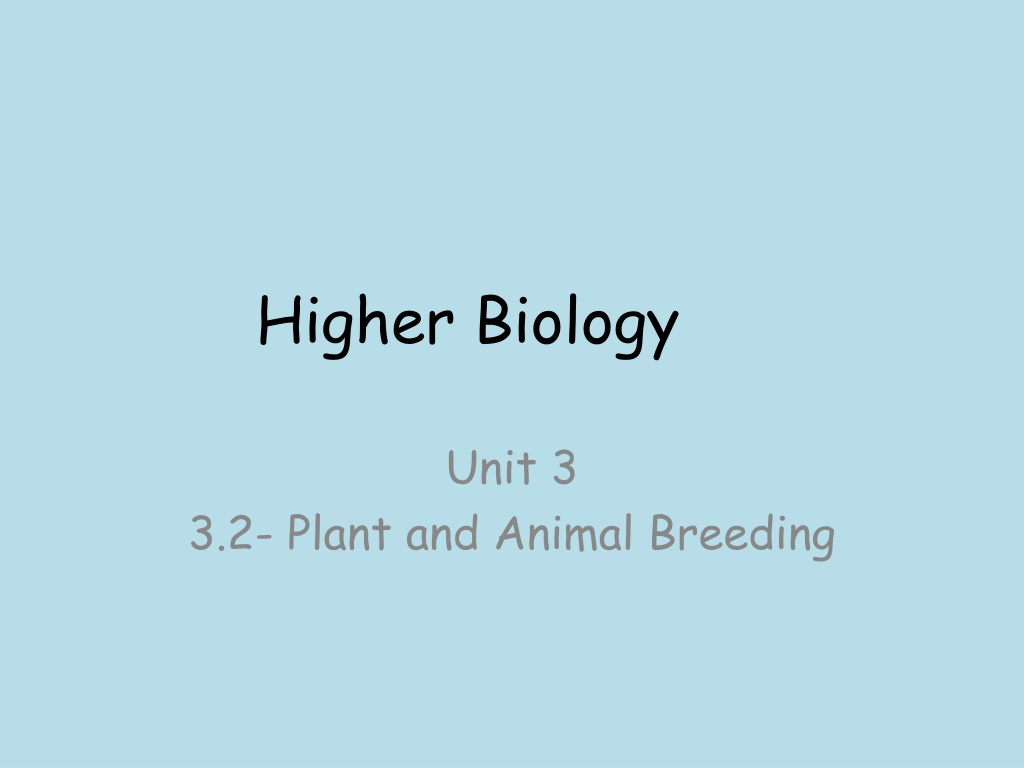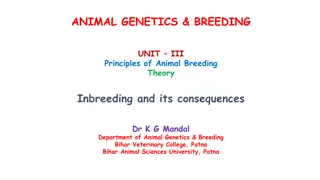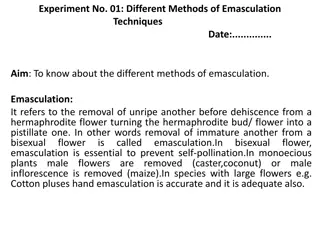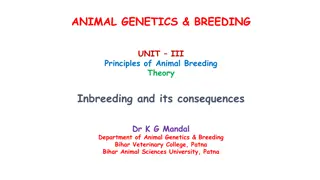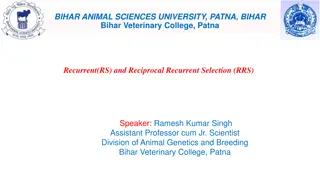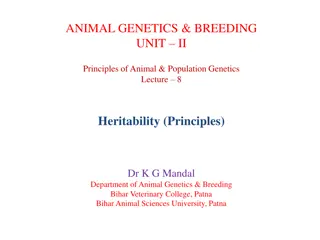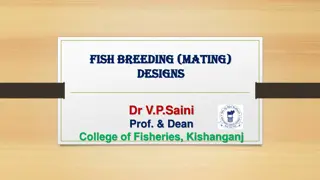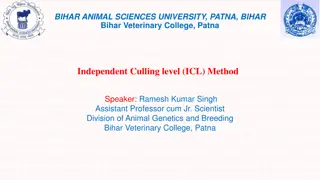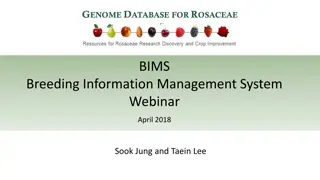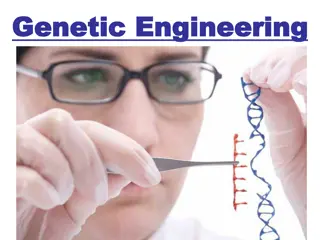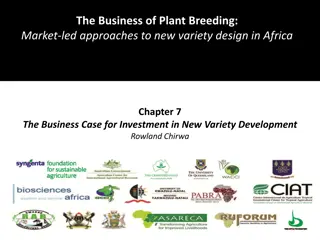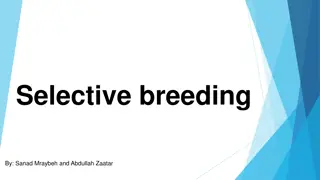Understanding Plant and Animal Breeding Techniques
Selective breeding is a key technique used by breeders to manipulate an organism's heredity in order to obtain desirable characteristics in crop plants and livestock. This process aims to produce new and improved cultivars or breeds that are beneficial to humans. Through heritable characteristics such as increased yield, nutritional value, resistance to pests and diseases, and adaptation to specific environments, breeders strive to enhance the quality and productivity of agricultural produce. Plant field trials play a crucial role in comparing different cultivars, evaluating the impact of environmental conditions, and assessing genetically modified crops. Designing these trials involves careful consideration of various factors, including the selection of treatments to ensure a fair comparison between different variables.
- Breeding techniques
- Selective breeding
- Plant field trials
- Heritable characteristics
- Crop improvement
Download Presentation

Please find below an Image/Link to download the presentation.
The content on the website is provided AS IS for your information and personal use only. It may not be sold, licensed, or shared on other websites without obtaining consent from the author. Download presentation by click this link. If you encounter any issues during the download, it is possible that the publisher has removed the file from their server.
E N D
Presentation Transcript
Higher Biology Unit 3 3.2- Plant and Animal Breeding
Selective Breeding Breeders of crop plants and livestock attempt to manipulate an organism s heredity to obtain desirable characteristics This is done to produce a new and improved cultivar or breed that are beneficial to humans
Heritable Characteristic Increase in Yield Example Increase is mass of food produced by wheat crop Increase in mass of protein produced by soya bean crop Resistance of tomato to eelworm Resistance of potato to late blight Growth of cereal crop to uniform height suited to mechanical harvesting Ability of maize to grow in cold, damp climate Increase in nutritional value Resistance to pests Resistance to disease Possession of useful characteristic Ability to thrive in a particular environment
Plant Field Trials A plant field trial is an investigation set up to 1. Compare the performance of 2 different plant cultivars in the same environmental conditions 2. Find out the effect of different environmental conditions on a new cultivar of a crop plant 3. Evaluate GM crops
Plots and Treatments The area of land used for a field trial is divided into equal sized portions called plots A field trail involves treatments Treatments are the different ways in which each plot is treated, for example one given a high concentration of fertiliser and another a low concentration
Designing a field trial After establishing what will be investigated the next stage is to design the trial A number of factors need to be taken into consideration when designing the field trial
Selection of treatments For each treatment only one variable should be changed All other variables should remain the same This allows for a fair comparison to be made between treatments
Number of replicates It is impossible to ensure that treatment application and plots are exactly identical each time a treatment is applied This is known as experimental error To reduce the impact of experimental error several replicates must be set up of each treatment This makes the results more reliable
Randomisation of treatments If plots are treated in an orderly sequence a bias may occur This could be due to other environmental factors To avoid this plots should be treated randomly
Repeats in other environments Plant field trials may be repeated in different environments This is to ensure that the conclusions drawn from the trial are valid across different environments For example a plant that grows well in sandy soil may not in a more temperate climate
Selecting and breeding Breeders select parents with the characteristics they desire and breed them to produce superior offspring The aim is to ensure that offspring possess the desirable alleles and express the desirable traits This occurs over many generations
Outbreeding Outbreeding involves the fusion of 2 gametes from unrelated member of the same species Animals and cross pollinating plants are naturally outbreeding Cross pollinating plants often possess features that prevent self pollination from occurring Outbreeding plants include tomato, sugar beet and maize
Inbreeding Inbreeding involves the fusion of gametes from two closely related individuals Some species of plants are self pollinating and are therefore inbreeders Peas, wheat and rice are natural inbreeders
Effects of Inbreeding Inbreeding ensures that all members of each generation receive the same alleles This can be beneficial if they are bred for desirable characteristics such as increased yield or disease resistance in plants
Inbreeding Some of the problems associated with inbreeding include 1. Loss of heterozygosity 2. Inbreeding depression
Loss of Heterozygosity Continuous inbreeding leads to a development of homozygosity and a decrease in heterozygosity This isn t an issue for self pollinating plants because harmful alleles have been lost due to natural selection
Inbreeding depression Inbreeding depression occurs when a natural outbreeder is forced to inbreed When this happens genotypes emerge that are homozygous for recessive alleles that are deleterious (harmful) This can result in a loss of vigour, smaller size, and reduction in yield
The first plant represents the parent plant forced to inbreed. The next 3 plants are the 3 generations produced.
Crossbreeding Inbreeding will bring about the improvement of a desired trait but will also result in the build up of harmful recessive alleles To avoid this breeders will cross breed with a strain possessing a different but desirable characteristic
Savannah cats Watch this video introducing the savannah cat Produced by breeding a serval with a domestic cat domestic cat breeds 131 Domestic Cat Breeds Download Small Serval wallpaper Savannah Cat portrait.jpg
Domestic cat Wild Serval cat X F1 hybrid Looks like serval, retains some wild character Domestic cat X F2Ryan0402 This type of breeding is called a back cross F2 hybrid Looks like serval, milder temprement
Hybrid vigour Hybridisation (mating) of two different inbred homozygous cultivars of plant species produces offspring who are uniformly heterozygous. gametes All ABcd aabbCCDD X AABBccdd Parents All abCD F1 AaBbCcDd
They also display increased: Vigour Yield Fertility This is called hybrid vigour. Poorer recessive genes are masked by superior dominant ones. Parent 1 F1 hybrid Parent 2
However, if F1 hybrids are allowed to interbreed with one another, the F2 generation can be too genetically diverse and many will lack the improved characteristics.
